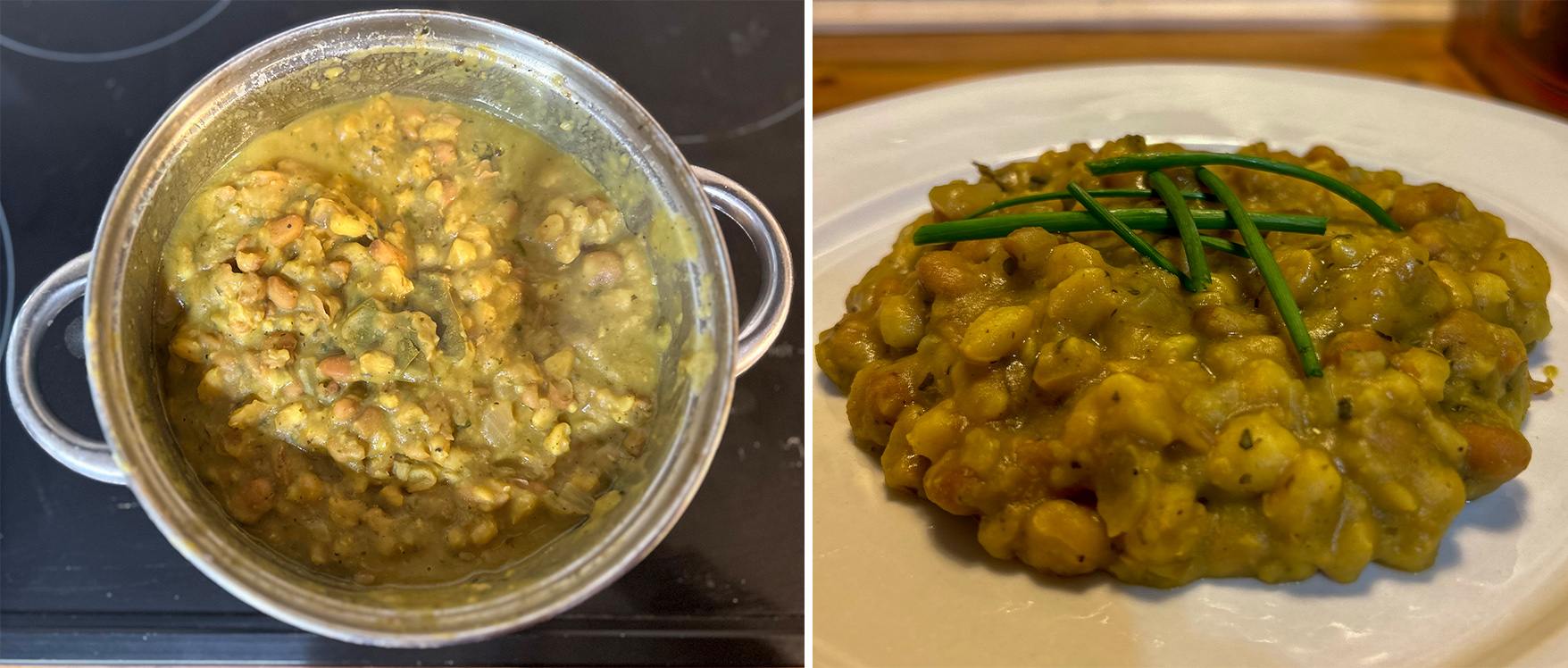Committing to making South African dishes every week, in the run-up to Heritage Day, is becoming difficult. There are two reasons for this.
First, as diverse and complex a nation as South Africa is, I’ve discovered that few dishes have roots in the country. Maybe there are many dishes (excuse my ignorance), but because I am a novice cook I’m becoming bereft of South African food ideas.
Second, I think it is completely my fault. Thanks to my friend Tony Jackman, I started this column strongly, trying out well-loved South African dishes — long before the Heritage Day food series started.
Remember my failed and funny attempt at making amagwinya or vetkoek? Read more in Daily Maverick: Fail! How I shamed myself with my amagwinyas-of-mass-destruction.
Or remember my moment of redemption from the disastrous amagwinyas as I made delicious dombolo or steamed bread? Read more in Daily Maverick: Redemption! I came back stronger with light, fluffy dombolo.
The dombolo could be served with mala mogodu, also known as tripe – or the insides of a cow or sheep, which I also made. Read more in Daily Maverick: The case for stewed tripe or mala mogodu during winter.
And not to toot my own horn too much, my cooking also fuelled a debate about the origins of a kota or bunny chow, which I am certain is from my hometown of Soweto in Johannesburg. Read more in Daily Maverick: Bunny Chow Vs Kota – who owns it, Soweto or Durban?
There are more of my recipes of South African dishes if you look through Daily Maverick’s website. Dear engaged and spirited reader, do you now see why I have hit a wall with dish ideas? Please send me your recipe recommendations.
However, this week I thought about my long-deceased Xhosa grandmother, Nomalizo, who was excellent at cooking. She didn’t follow a recipe or exact measurements, but whatever she made could easily beat food offerings from Michelin Star-rated restaurants. I thought about Nomalizo because 3 September marked the 22nd anniversary of her death.
Her go-to meal to feed her large family was samp and beans, which I (and Xhosa people) call umngqusho. It is made of dried maize and dried beans. In the case of samp, however, the mealie kernels are crushed or broken into pieces.
It’s a simple and no-frills dish. I have fond memories of Nomalizo making a steaming pot of umngqusho, especially on a cold Soweto day. An earthy smell of umngqusho, slowly cooking from her coal-fired stove, would fill her kitchen and permeate across her tiny four-bedroom home, mass-produced by the apartheid government.
I consider Nomalizo and my family members as purists because we ate our umngqusho plain. There was no meat, stew, or gravy accompanying the umngqusho. I know that this might upset Xhosa people, as many would be offended if served a dish without meat. Nomalizo would always say that the best way to get rid of a guest who stayed too long would be to constantly serve them food with no meat. This would surely jolt them out.
Even for a novice like myself, making samp and beans is easy. It requires a lot of patience and time. It is recommended that the samp and beans be soaked overnight to soften them. This also cuts down the cooking time to about two hours. Without pre-soaking, the samp and beans will take three to four hours to cook at medium heat. However, the slower and longer you cook umngqusho, the more delicious it will be.
The K*K Cook’s samp and beans (umngqusho)
(Serves 3)
Ingredients
3 cups dry samp and beans mix
5 cups cold water (or more to cover the samp and beans)
1 finely chopped red or white onion
2 bay leaves
1 tsp turmeric
1 tsp garlic
1 tsp mixed herbs
1 tsp black pepper
1 Tbsp cream of mushroom soup
1 garlic-flavoured beef stock cube
Method
Cover the samp and beans with water and soak overnight. Drain and rinse before cooking.
In a large pot, cover the soaked samp and beans with water. Bring to a boil. Add the onion, bay leaves, and garlic. Reduce heat and simmer on low heat for one to two hours.
Then add turmeric, garlic, mixed herbs, black pepper, cream of mushroom soup, and garlic-flavoured beef stock cube. Your umngqusho is ready when the samp and beans are tender and the water is mostly absorbed.
Add additional water during cooking if needed. It also prevents your umngqusho from burning. DM
This article is more than a year old
TGIFood
Let’s plan to make Nomalizo’s umngqusho for Heritage Day
Umngqusho, also known as samp and beans, is a simple and no-frills dish. I have fond memories of my grandmother, Nomalizo, making a steaming pot of umngqusho, especially on a cold Soweto day.





